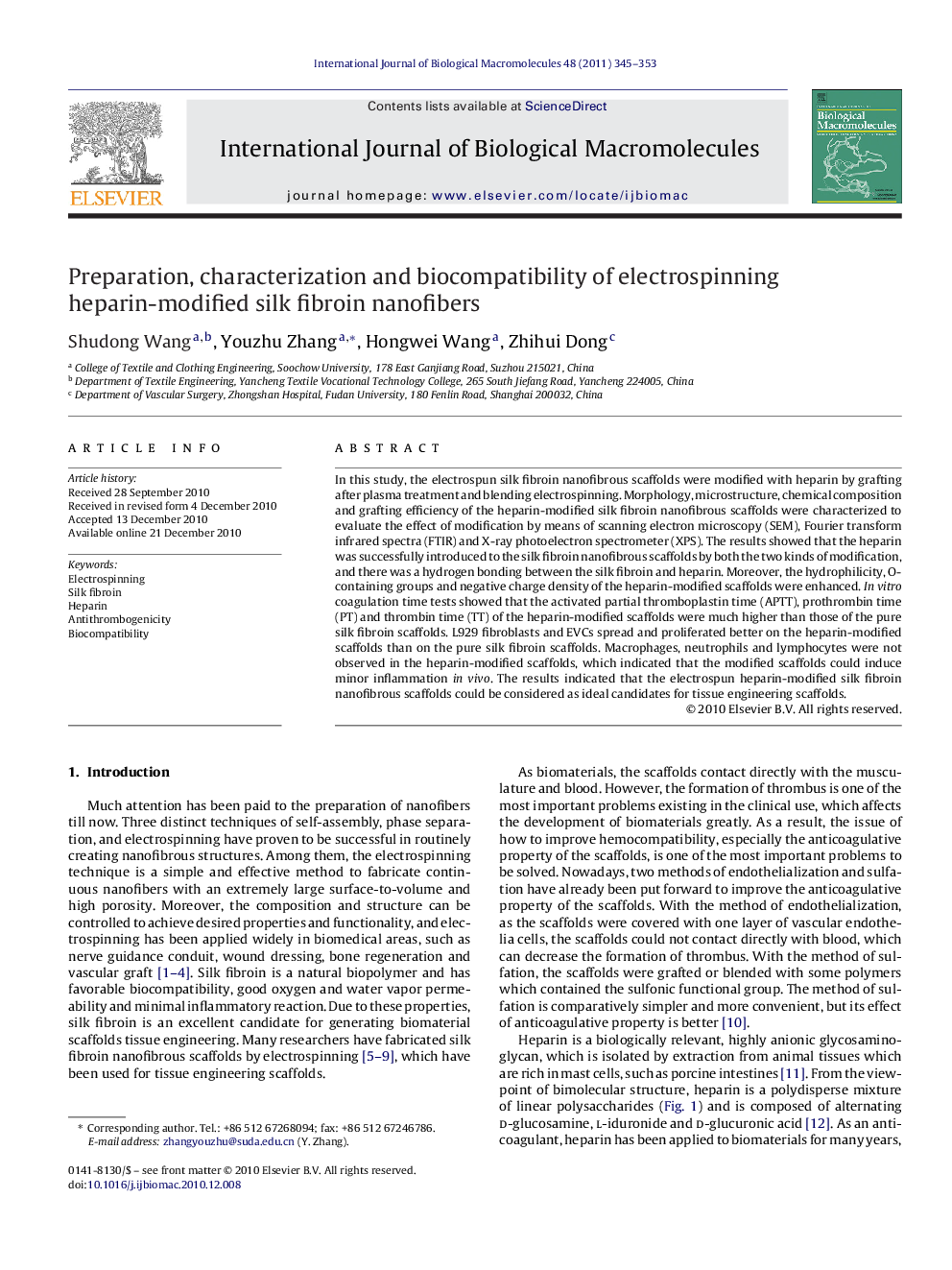| Article ID | Journal | Published Year | Pages | File Type |
|---|---|---|---|---|
| 1987373 | International Journal of Biological Macromolecules | 2011 | 9 Pages |
Abstract
In this study, the electrospun silk fibroin nanofibrous scaffolds were modified with heparin by grafting after plasma treatment and blending electrospinning. Morphology, microstructure, chemical composition and grafting efficiency of the heparin-modified silk fibroin nanofibrous scaffolds were characterized to evaluate the effect of modification by means of scanning electron microscopy (SEM), Fourier transform infrared spectra (FTIR) and X-ray photoelectron spectrometer (XPS). The results showed that the heparin was successfully introduced to the silk fibroin nanofibrous scaffolds by both the two kinds of modification, and there was a hydrogen bonding between the silk fibroin and heparin. Moreover, the hydrophilicity, O-containing groups and negative charge density of the heparin-modified scaffolds were enhanced. In vitro coagulation time tests showed that the activated partial thromboplastin time (APTT), prothrombin time (PT) and thrombin time (TT) of the heparin-modified scaffolds were much higher than those of the pure silk fibroin scaffolds. L929 fibroblasts and EVCs spread and proliferated better on the heparin-modified scaffolds than on the pure silk fibroin scaffolds. Macrophages, neutrophils and lymphocytes were not observed in the heparin-modified scaffolds, which indicated that the modified scaffolds could induce minor inflammation in vivo. The results indicated that the electrospun heparin-modified silk fibroin nanofibrous scaffolds could be considered as ideal candidates for tissue engineering scaffolds.
Related Topics
Life Sciences
Biochemistry, Genetics and Molecular Biology
Biochemistry
Authors
Shudong Wang, Youzhu Zhang, Hongwei Wang, Zhihui Dong,
